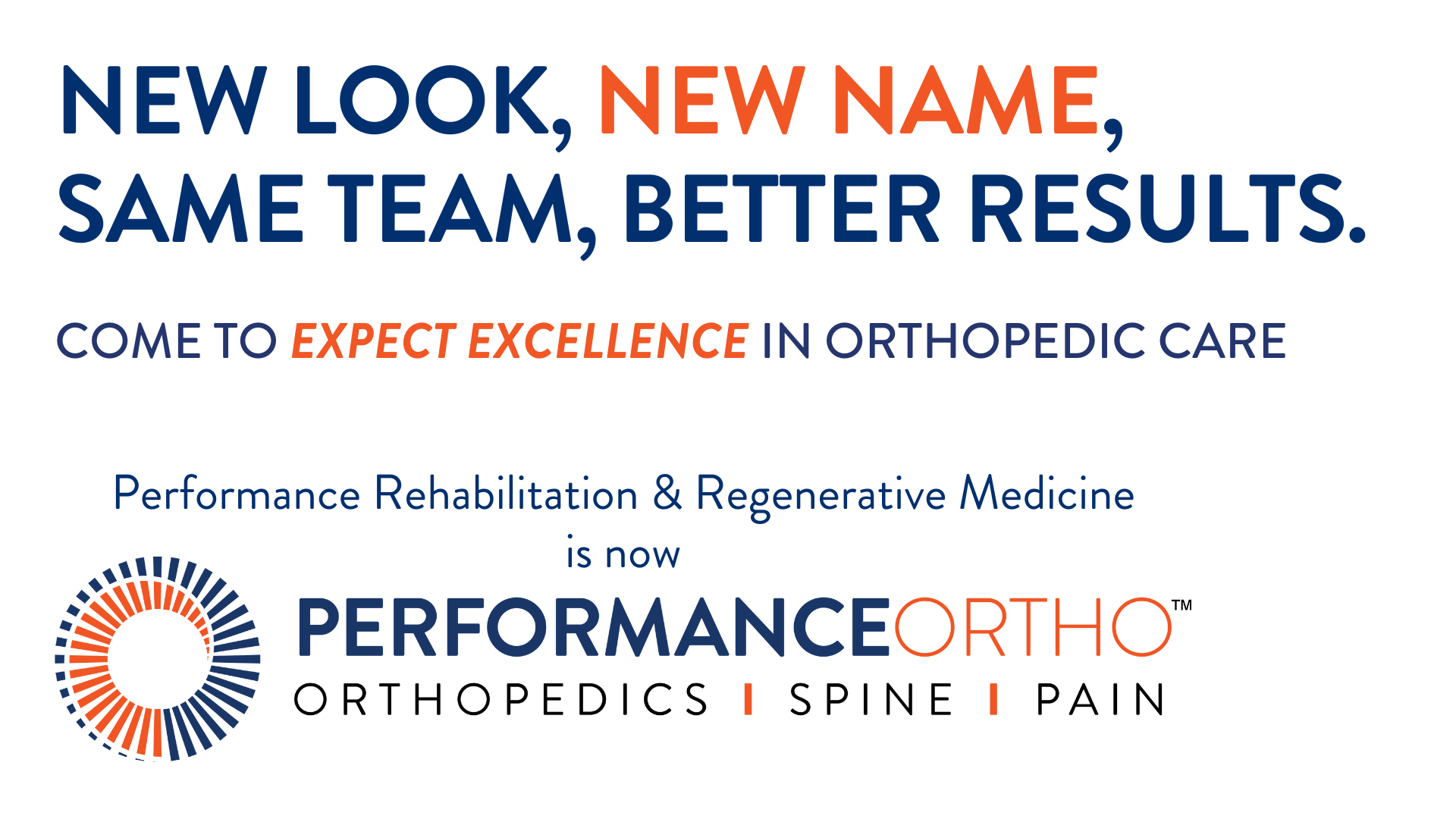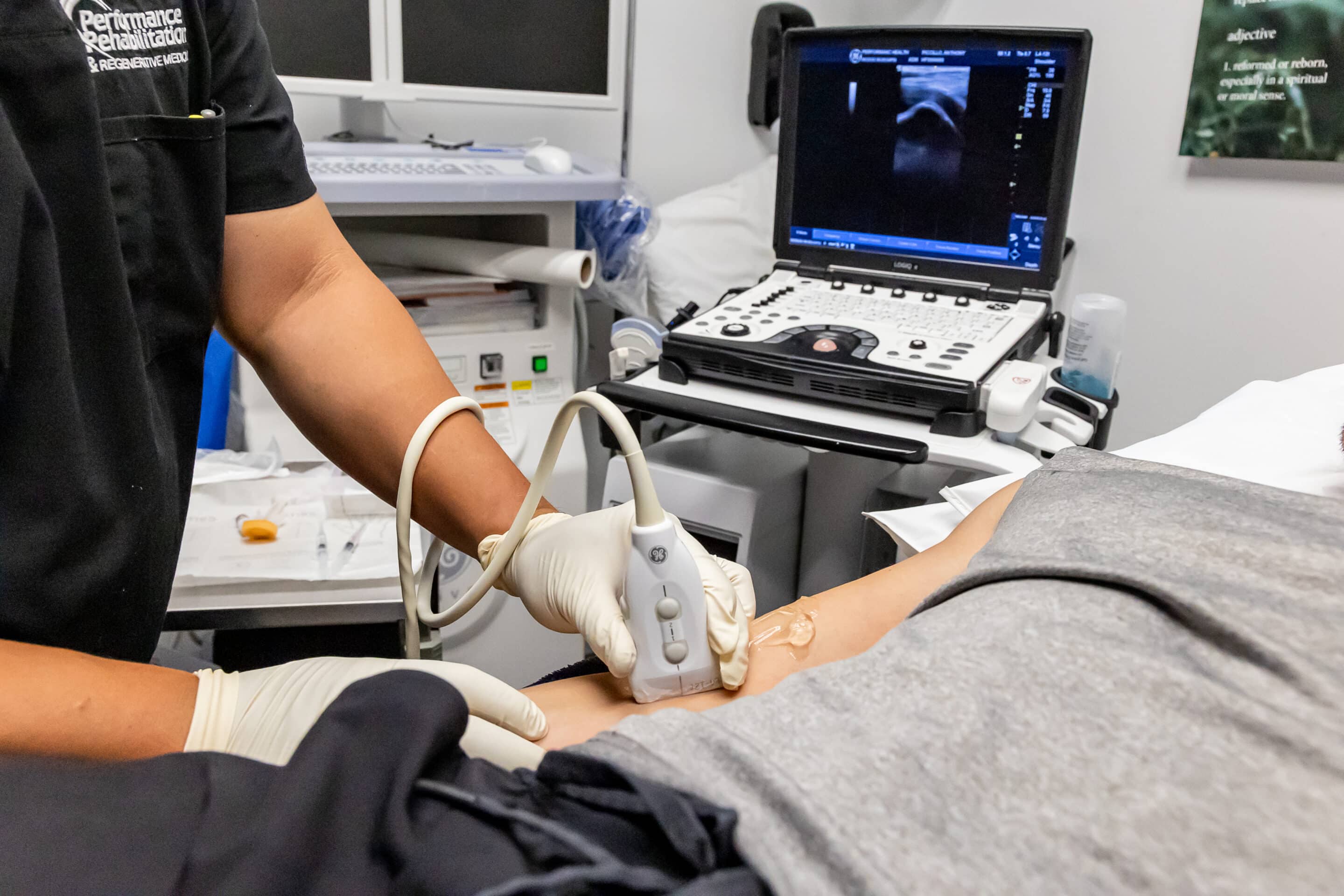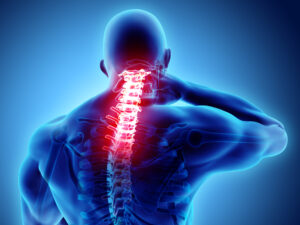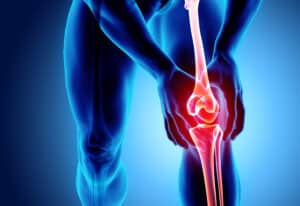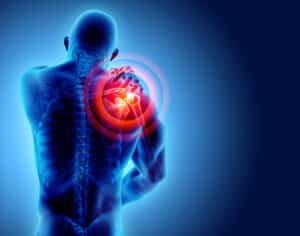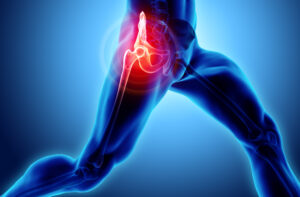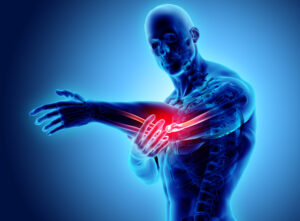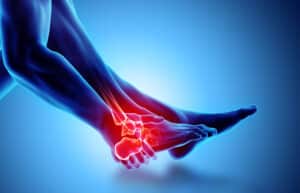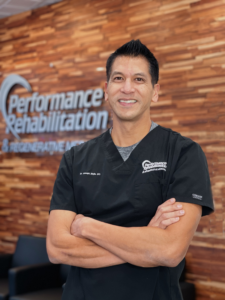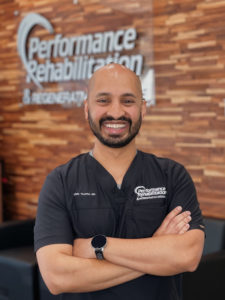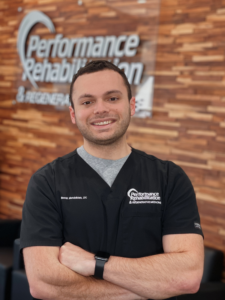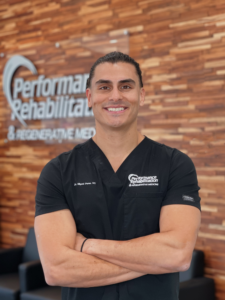Has Lower Back Pain Been Limiting You from Living Your Best Life?
Table of Contents
Lower back pain is a common ailment that affects millions of people worldwide. Whether it’s due to poor posture, muscle imbalances, or an injury, back pain can significantly impact your daily life. It can range from mild discomfort to severe, debilitating pain, impacting the quality of life for those who suffer from it.
Fortunately, a team-based approach to orthopedic care has emerged as an effective way to manage and relieve lower back pain. In this blog, we will discuss the details of this method and give helpful advice on relieving back pain.
Performance uses our proven team-based approach to get to the root cause of your spine and joint pain for over 20 years. Located in Branchburg NJ, Bridgewater NJ, Somerset NJ, and Watchung NJ, Performance is the number one orthopedic specialist in Somerset County NJ. A team-based approach to addressing lower back pain can be highly effective, as it brings together orthopedic professionals with different areas of expertise to diagnose, treat, and manage the condition comprehensively. Lower back pain is a complex issue that can have multiple underlying causes, and a multidisciplinary team can help identify and address those causes more effectively.
The Prevalence of Lower Back Pain
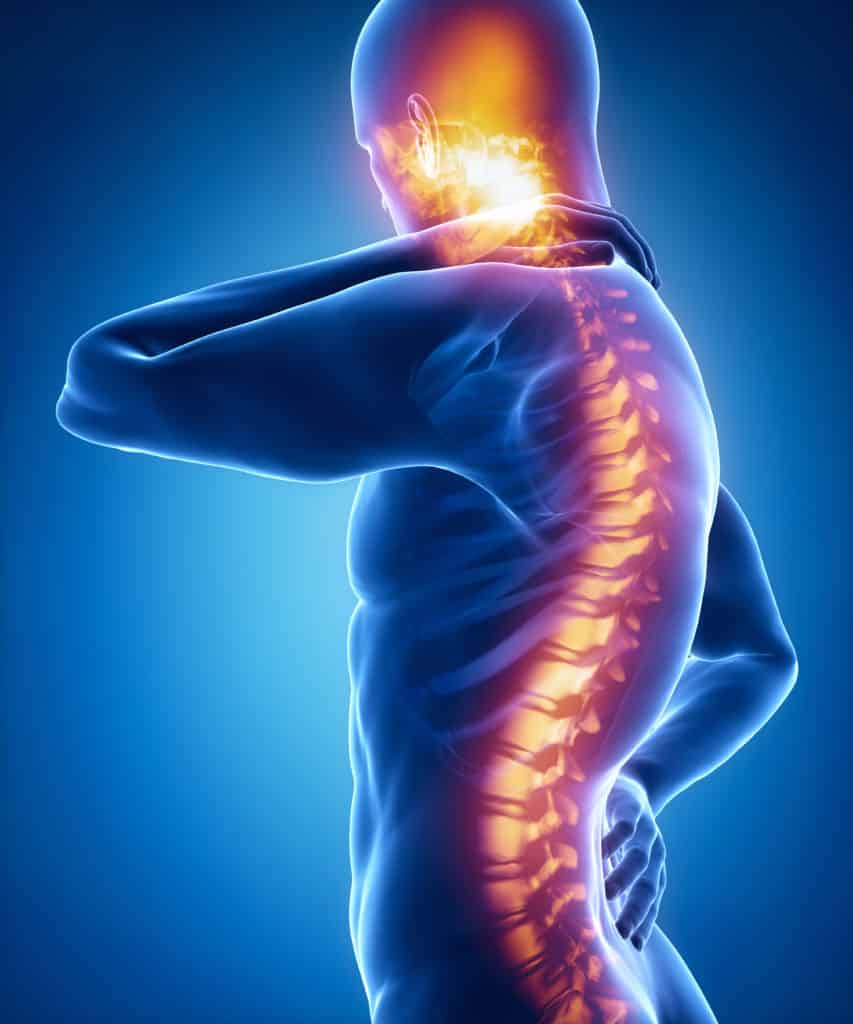
Lower back pain is a common health issue that affects a significant portion of the population worldwide. According to the World Health Organization, based on a study done in June 2023, over 619 million individuals will experience back pain at some point in their lives. It is one of the leading causes of disability and missed workdays in many countries. The prevalence of lower back pain can vary depending on several factors, including age, lifestyle, occupation, and overall health.
The Anatomy of the Lower Back
Before delving into treatment options, it’s essential to understand the anatomy of the lower back. The lower back has five vertebrae (L1 to L5). It sup›ports the upper body, helps with movement, and protects the spinal cord and nerves.
- Vertebrae: The lower back has five large and sturdy vertebrae. These vertebrae are called L1 to L5. They are bigger and stronger than the vertebrae in the upper back and neck. These vertebrae provide stability and support to the spine.
- Intervertebral Discs: Between each pair of lumbar vertebrae, there is an intervertebral disc. These discs act as shock absorbers and provide flexibility to the spine. They consist of a tough outer layer called the annulus fibrosus and a soft gel-like center called the nucleus pulposus.
- Spinal Cord and Nerves: The spinal cord runs through the vertebral column, including the lumbar region, and is protected by the vertebral bones. Nerves branching off from the spinal cord in the lumbar region supply the lower extremities and other areas of the lower back and pelvis.
- Muscles: The muscles of the lower back are essential for maintaining posture, providing stability, and facilitating movement.
- Ligaments: Various ligaments connect the vertebrae and provide stability to the spine. Some important ligaments in the lower back include the anterior longitudinal ligament, posterior longitudinal ligament, and the ligamentum flavum.
- Facet Joints: These are small synovial joints located between adjacent vertebrae. Facet joints allow for smooth movement and flexibility in the spine while preventing excessive twisting or sliding.
Common Causes of Lower Back Pain
Before we dive into the exercises and physical therapy techniques, it’s important to understand the common causes of back pain. This knowledge can help you identify the root of your discomfort and tailor your treatment accordingly. Common causes include:
- Muscle Strain: Overexertion, lifting heavy objects incorrectly, or sudden movements can strain the muscles in your back.
- Poor Posture: Prolonged periods of sitting or standing with improper posture can lead to chronic back pain.
- Herniated discs occur when the soft part of a spinal disc pushes through the tough outer layer. This can cause pain due to compressed nerves.
- Osteoarthritis: Wear and tear of the spinal joints can result in osteoarthritis, contributing to lower back pain.
- Weak Core Muscles: Insufficient core muscle strength can result in poor spinal support and instability.
- Spinal Stenosis: This condition involves the narrowing of the spinal canal, which can put pressure on the spinal cord and nerves, leading to pain.
- Scoliosis: Abnormal curvature of the spine can cause pain and discomfort in the lower back.
- Degenerative Disc Disease: A condition in the spine that is an arthritic process that occurs in the discs of the spine, as we age. The discs act as shock absorbers and bear weight. When they begin to degenerate, this can result in many different problems, including pain and stiffness in the neck and spine.
Preventing Lower Back Pain
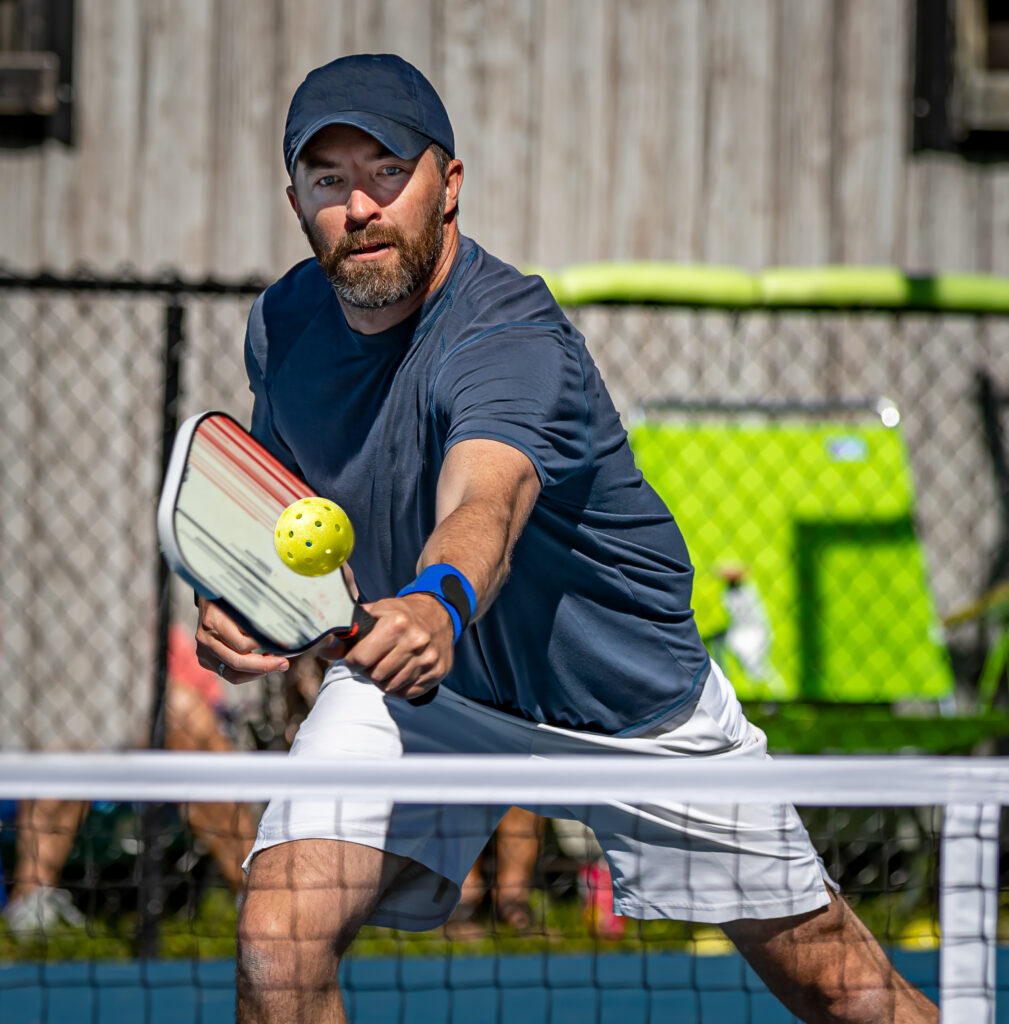
- Ergonomics: Proper ergonomics in the workplace and at home can prevent lower back pain. Adjusting chairs, desks, and computer screens to promote good posture is essential.
- Regular Exercise: Engaging in regular exercise to strengthen core muscles and improve flexibility can prevent lower back pain.
- Lift Safely: Using proper lifting techniques, such as bending at the knees and keeping the object close to the body, can prevent strains and injuries.
- Maintain a Healthy Lifestyle: Eating a balanced diet, managing stress, and getting enough sleep are key factors in preventing lower back pain.
Conservative Treatment Options for Lower Back Pain
- Professional Care: Targeted exercises and stretches with a physical therapist can help improve muscle strength and flexibility, reducing lower back pain.
- Medications: Over-the-counter pain relievers, muscle relaxants, and anti-inflammatory drugs can provide temporary relief.
- Heat and Cold Therapy: Alternating between hot and cold packs can help reduce pain and inflammation.
- Ergonomic Adjustments: Proper ergonomics at home and work can prevent exacerbation of lower back pain.
- Exercise and Physical Activity: Exercise like swimming and walking, can help you maintain a healthy weight. It can also reduce the likelihood of experiencing back pain.
- Posture and Body Mechanics: Improper posture and body mechanics are often contributors to lower back pain. Maintaining good posture and using proper lifting techniques can prevent pain.
- Nutrition and Weight Management: A healthy diet can reduce inflammation and promote overall well-being. Maintaining a healthy weight can also relieve excess pressure on the lower back.
- Stress Management: Stress can exacerbate lower back pain. Practicing relaxation techniques such as meditation and deep breathing can help manage stress levels.
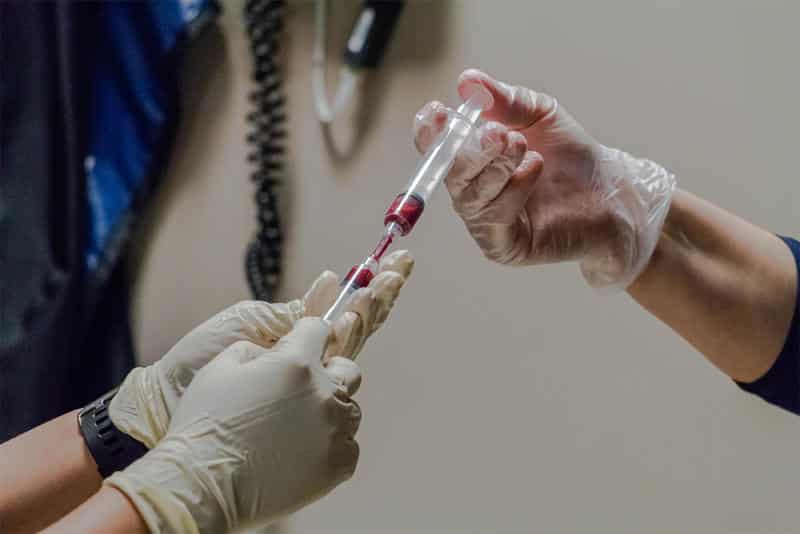
How Regenerative Medicine Can Relieve Your Back Pain
Regenerative medicine is an innovative field that holds promise for treating lower back pain by harnessing the body’s natural healing mechanisms to repair damaged tissues and promote regeneration. Several regenerative medicine approaches are being explored for their potential to help individuals suffering from lower back pain:
- Adult Stem Cell Therapy: Stem cells are undifferentiated cells with the potential to develop into various cell types in the body. Stem cell therapy involves the injection of stem cells, often derived from a patient’s own body (autologous) or from other sources, into the damaged or degenerated area of the lower back. These cells can differentiate into the types of cells needed for tissue repair, such as cartilage, bone, or muscle. Stem cell therapy aims to promote tissue regeneration, reduce inflammation, and alleviate pain.
- Platelet-Rich Plasma (PRP) Therapy: PRP therapy involves drawing a small amount of the patient’s blood, processing it to concentrate the platelets, growth factors, and other healing components, and then injecting this PRP directly into the lower back region. PRP has been used to stimulate tissue repair, reduce inflammation, and improve blood flow, all of which can contribute to pain relief and healing.
- Prolotherapy: Prolotherapy, also known as regenerative injection therapy, involves the injection of substances (often a solution containing dextrose) into damaged or weakened ligaments and tendons in the lower back. This process is believed to initiate a healing response, strengthening the tissues and reducing pain.
It’s important to note that while regenerative medicine holds promise for lower back pain, more research is needed to establish its long-term safety and effectiveness fully. The success of regenerative treatments can vary from person to person, and not all individuals with lower back pain are suitable candidates for these therapies.
Why A Team Based Approach Can Help Your Lower Back Pain
A team-based approach is crucial in healthcare for several reasons, as it enhances patient care, improves outcomes, and contributes to a more efficient and effective healthcare system.
Here are some key ways in which a team-based approach is important in healthcare:
- Comprehensive Care: Healthcare teams typically consist of professionals with diverse expertise, such as physicians, nurses, pharmacists, physical therapists, social workers, and more. This diversity allows for comprehensive care that addresses not only the immediate medical needs of patients but also their psychological, social, and emotional well-being.
- Expertise and Specialization: In today’s complex healthcare landscape, no single healthcare professional can possess all the knowledge and skills needed to address every aspect of a patient’s care. Teams allow for specialization, with each member bringing their unique expertise to the table.
- Enhanced Decision-Making: Collaborative decision-making is a hallmark of team-based care. Healthcare teams engage in discussions, share insights, and collectively decide on the best course of action for a patient. This often results in more informed and well-rounded decisions.
- Improved Patient Safety: Teams play a critical role in error prevention and patient safety. They can cross-check orders, medications, and procedures, reducing the likelihood of medical errors. In addition, team members can speak up and advocate for patients when they notice potential issues.
- Continuity of Care: Healthcare teams often provide continuity of care by ensuring that information is seamlessly shared among team members. This ensures that patients receive consistent care and that no critical details are overlooked during transitions of care.
- Patient-Centered Care: A team-based approach places the patient at the center of care. Patients are often involved in discussions about their treatment plans, goals, and preferences. This patient-centered approach helps build trust and engage patients in their own care.
- Research and Innovation: Collaborative healthcare teams often contribute to research and innovation in healthcare. They can work together on clinical trials, quality improvement initiatives, and the adoption of new technologies and treatments
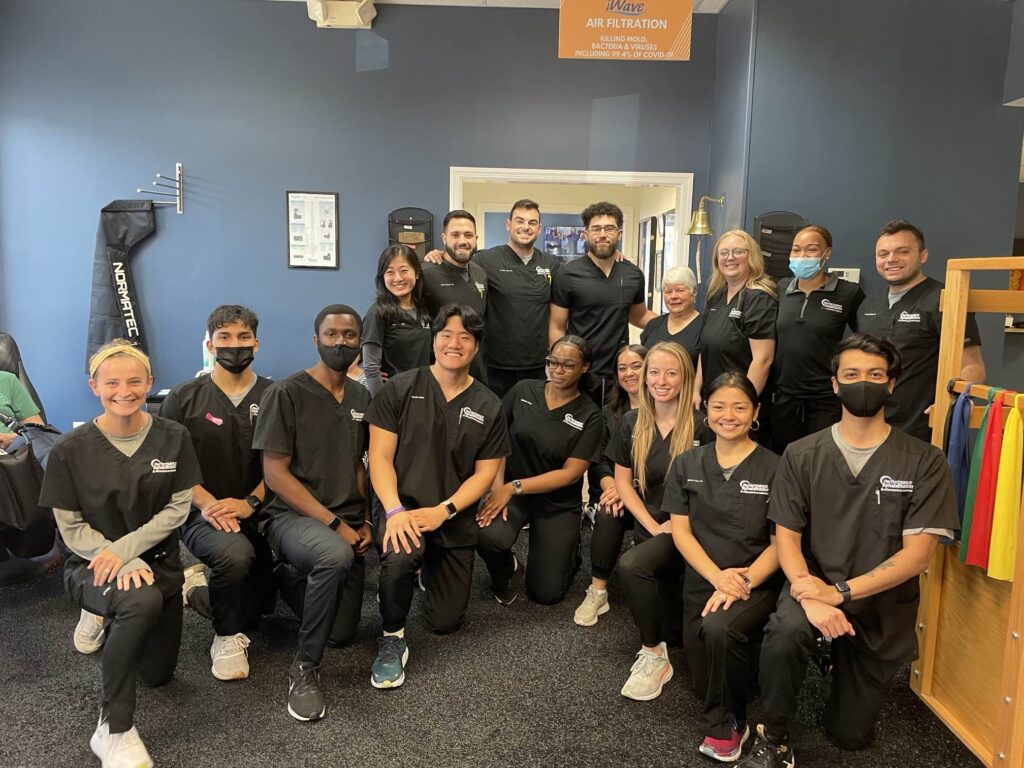
Different Members of Our Team Based Approach in Somerset County NJ
The Role of Orthopedic Specialists
Orthopedic specialists play a central role in diagnosing and managing lower back pain. They undergo training to evaluate the musculoskeletal system, identify underlying conditions, and recommend appropriate treatments.
Orthopedic care involves a team of healthcare professionals. These professionals at Performance include surgeons, therapists, nurses, and pain specialists. They work together to help patients with bone and muscle problems.
Physical Therapists
Physical therapists are crucial members of the orthopedic care team. They design customized exercise programs to improve strength, flexibility, and posture, helping patients alleviate lower back pain and prevent its recurrence.
- Assessment and Evaluation: Physical therapists perform thorough assessments to diagnose and evaluate the patient’s musculoskeletal condition. They assess mobility, strength, flexibility, posture, and functional limitations, helping to identify the root causes of the issue.
- Planning Treatment: Physical therapists create personalized treatment plans with the patient and orthopedic team based on their assessment. We tailor these plans to the patient’s specific needs, goals, and medical history.
- Pain Management: Physical therapists use different techniques like manual therapy, heat and cold therapy, and exercises to effectively manage pain. They aim to reduce pain levels and improve the patient’s overall comfort.
- Rehabilitation: Post-surgery or after an injury, physical therapists guide patients through rehabilitation programs designed to promote healing and restore function. They monitor progress, adjust treatment plans as needed, and provide education on home exercises and self-care.
- Muscle Strengthening: Physical therapists focus on strengthening muscles around affected joints, which helps stabilize the joint and reduce the risk of future injuries or complications.
- Range of Motion: Patients with orthopedic issues often experience reduced range of motion in their joints. Physical therapists use stretching exercises and manual techniques to improve joint mobility and flexibility.
- Gait Training: For patients with mobility issues, physical therapists help them regain normal walking patterns and balance. This is especially crucial after joint replacement surgeries.
- Preventative Care: Physical therapists work to prevent future injuries by teaching patients injury prevention techniques, safe exercise practices, and lifestyle modifications.
Occupational Therapists
Occupational therapy (OT) is crucial in orthopedic care. It assists individuals in recovering from injuries, surgeries, or conditions that impact their daily activities. A team-based approach is often employed in orthopedic care to ensure comprehensive and effective treatment.
It helps patients improve their abilities and be more independent in daily tasks, with collaboration among healthcare professionals for better treatment. This multidisciplinary approach helps patients achieve the best possible outcomes in their orthopedic rehabilitation and recovery journey.
Chiropractors
Chiropractic physicians can play a role in team-based orthopedic care. Chiropractors diagnose and treat spine-related conditions using manual manipulation and non-surgical methods for musculoskeletal issues. Chiropractors can collaborate with orthopedic surgeons and medical doctors in cases where their expertise aligns.
Chiropractors receive training to diagnose and assess various musculoskeletal conditions, especially those related to the spine and nervous system. Their assessments can provide valuable insights into a patient’s condition and help determine the most appropriate course of treatment.
Acupuncturist
Acupuncturists help with orthopedic care by managing pain, improving musculoskeletal health, and enhancing patient well-being. Integrating acupuncture into a multidisciplinary approach can provide patients with a more comprehensive and holistic orthopedic care experience. Here’s how acupuncturists can contribute to team-based orthopedic care:
- Pain Management: Acupuncture is well-known for its effectiveness in managing various types of pain, including musculoskeletal pain, chronic pain, and post-surgical pain. Acupuncturists can team up with doctors, therapists, and other healthcare workers to help patients feel better and reduce pain.
- Reducing Inflammation: Acupuncture can help reduce inflammation in injured or inflamed tissues, which is a common concern in orthopedic conditions such as arthritis, tendonitis, and bursitis.
- Improving Range of Motion: Acupuncture and other therapies can help improve a patient’s ability to move their joints and increase flexibility. This is important for recovering from orthopedic injuries and regaining normal function.
- Stress Reduction: Orthopedic conditions often come with physical and emotional stress. Acupuncture can promote relaxation and stress reduction, helping patients cope better with their condition and improving overall well-being.

Interventional Pain Specialists
Interventional pain specialists play a crucial role in a team-based orthopedic approach to managing musculoskeletal conditions and pain. Here’s how interventional pain specialists contribute to this team-based approach:
1. Pain Assessment and Diagnosis: Pain specialists are experts in evaluating and diagnosing the source of a patient’s pain, which is essential for developing an effective treatment plan. They use a variety of diagnostic tools, such as imaging studies, nerve blocks, and physical examinations, to pinpoint the cause of the pain.
2. Non-Surgical Pain Management: Interventional pain specialists offer non-surgical pain management options for patients with orthopedic conditions. These options can include medication management, physical therapy, and lifestyle modifications.
3. Minimally Invasive Procedures: Pain specialists are skilled in performing minimally invasive procedures to alleviate pain related to orthopedic issues. These procedures may include epidural steroid injections, facet joint injections, nerve blocks, and radiofrequency ablation. This also includes regenerative medicine treatments including adult stem cell therapy, platelet-rich plasma therapy, and prolotherapy. These interventions can provide significant pain relief and reduce the need for surgical interventions.
4. Collaboration with Orthopedic Surgeons: Pain specialists collaborate closely with orthopedic surgeons to determine the most appropriate treatment plan for each patient. In some cases, they may work together to decide whether a patient is a candidate for surgery or whether conservative measures can effectively manage the pain.
Orthopedic Surgeons
Orthopedic surgeons are important in orthopedic care. They use their knowledge and skills to diagnose, treat, and manage many different bone and muscle problems. In a team-based approach to orthopedic care, orthopedic surgeons collaborate with various healthcare professionals to provide comprehensive and holistic care to patients.
Orthopedic surgeons are trained to perform a wide range of surgical procedures to treat musculoskeletal conditions, including joint replacement surgeries, arthroscopic procedures, fracture repairs, and spinal surgeries, among others. They determine when surgery is necessary and carry out these procedures with precision.
Lower back pain can be a challenging condition, but with a team-based approach to orthopedic care and the implementation of practical strategies, relief is possible. By understanding the causes, assembling the right healthcare team, and making lifestyle modifications, individuals can take proactive steps towards managing and preventing lower back pain, ultimately improving their overall quality of life. Remember, it’s essential to consult with healthcare professionals to create a personalized plan for your specific condition. To start living pain free, click the button below to book an appointment!


